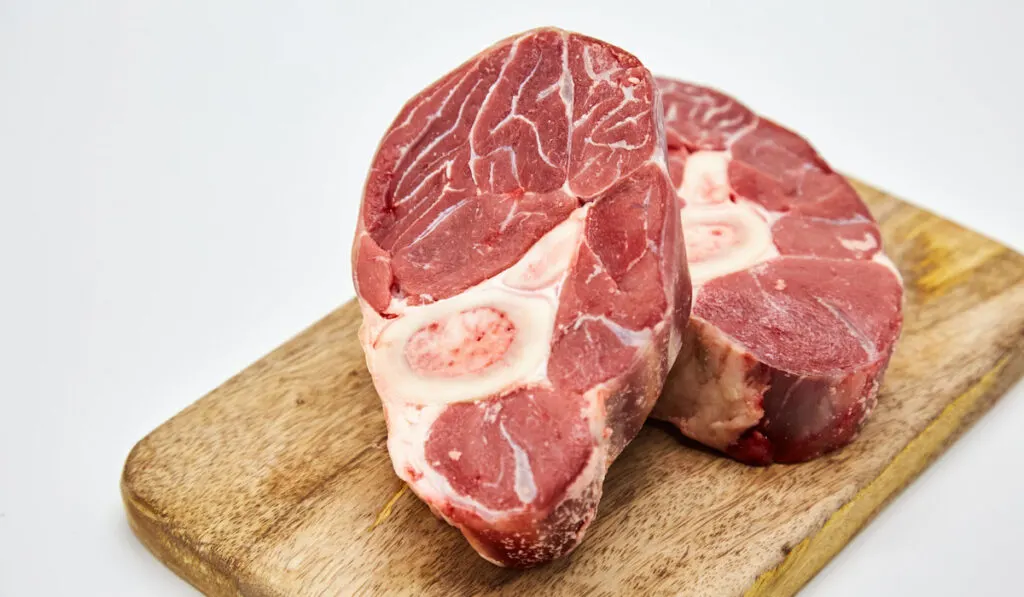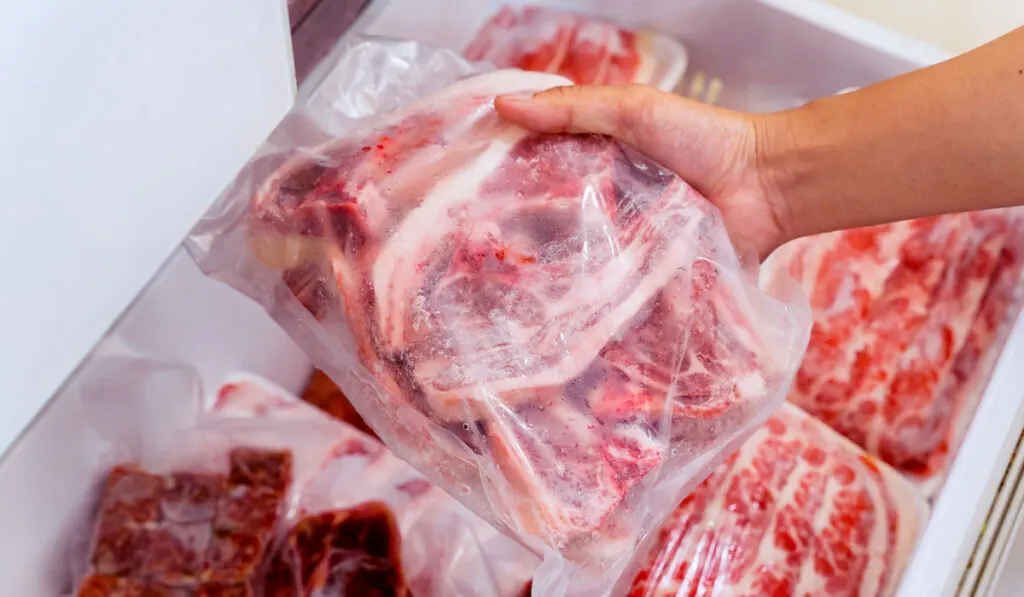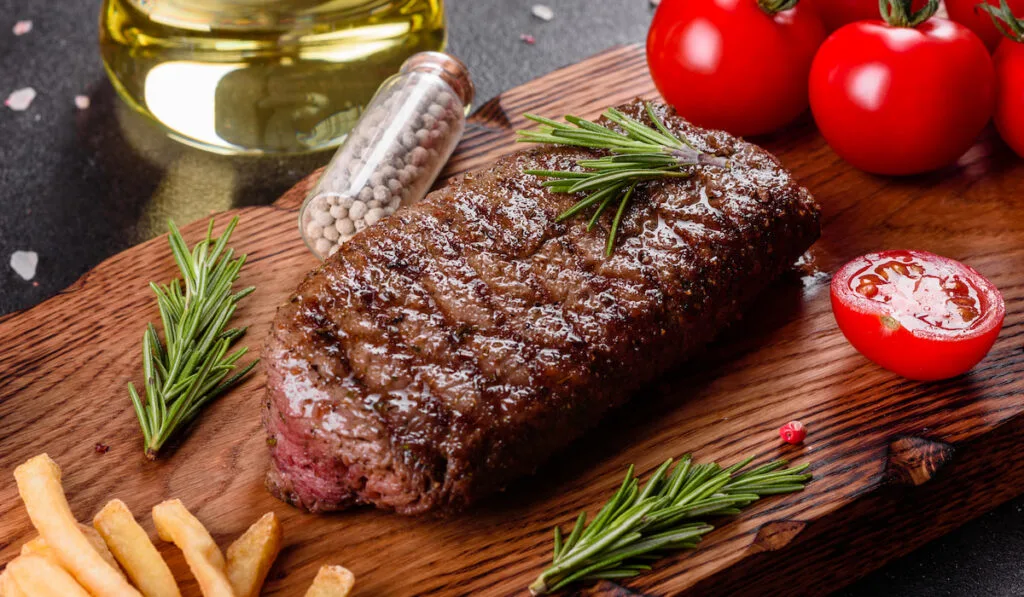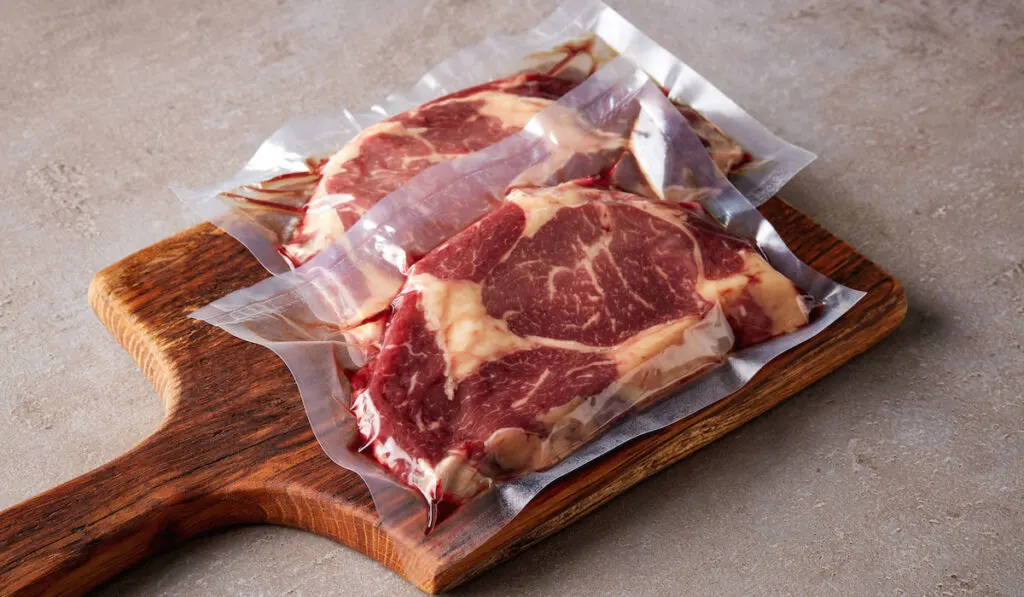Steak is one of the most expensive meats you can buy now, so most people want to make sure they get their money’s worth. If you let the steak sit out for too long, it will go bad. It will last a bit longer in the refrigerator, but the best way to store any type of beef for longer periods of time is by freezing it.
How do you know if the steak you’re eating or are about to cook is bad?
Usually, a bad steak will develop a slimy layer on its exterior. It will darken in color and start to smell rancid. Thankfully, most steak and other beef products will begin to smell bad first, so you won’t have to taste them before they become rotten.

Of course, at some point the steak is on the border between fresh and bad, so it’s important to learn to tell if a steak is bad. Here are some things to look for and tips on storing your steak, so it stays good for longer.
Table of Contents
Signs a Steak Is Bad
How long do you have to cook a steak after you buy it? No one wants to leave a steak sitting for too long because that means you won’t get to enjoy it. If you suspect a steak is bad, you can follow these signs to make sure.
Slimy Film

When a steak turns bad, it will develop a slimy film on its surface. Run a finger along the steak to see how it feels. If it’s sticky or slimy, it may be too far gone.
A steak should feel moist but clean. There shouldn’t be anything that sticks to your fingers when you touch it.
The slimy film may have a yellowish color to it. Your steak will look almost shiny instead of having a rich red color. This usually happens a couple of days after the steak is left in the refrigerator. It can develop even faster if you leave it out on the counter.
A Foul Smell

A funky smell is one of the most obvious signs that a steak is bad. Therefore, the smell test is your best chance of finding out if a steak is bad before you eat it. Fresh steak should have a smell, but it shouldn’t be rancid or off-putting.
Bad steak, on the other hand, will be something you won’t want to keep smelling. Simply putting it next to your nose will be enough to tell you it’s gone bad. When steak ages too far, it will build up too much lactic acid that smells foul.
The Expiration Date

While it’s OK to eat some products past their expiry date, you probably wouldn’t want to take chances eating expired steak. When you do, you increase your odds of eating something slimy or with bacteria growth.
Look at your package for the expiration date, and only eat steaks before they expire.
These are just a few of the signs of how to tell if steak is bad. Most people know what good steak looks and smells like. If you notice something drastically different, and you’re not purposefully experimenting with the dry aging process, you should throw it in the trash and cook another steak.

Is It Ok to Eat Steak That’s Darker?
Sometimes, steak that’s left in the fridge will darken by a few shades. This is usually referred to as turning grey; some people don’t want to eat a steak with a grayish, darker tone.
However, you can typically eat gray steak that’s been in the fridge for days. In as much as there is no slimy film or foul smell, it’s likely still good to consume.
Nevertheless, a darker steak with any discoloration that you think is mold should go in the garbage. This graying process only happens to raw steaks kept in the fridge or left on the counter.
So, let’s explore how to tell if frozen or cooked steak is bad.

How Long Is Frozen Steak Good?
Frozen steak can stay in good condition for years! As long as the freezer keeps temperatures down, the steak will be suspended until you decide to defrost and eat it.
Many families have separate freezers to keep their steaks, ground beef, chicken breasts, and other cuts of meat. Certainly, steaks can be large sized, so you’ll need to manage your freezer effectively to make space for other grocery items.
Essentially, you can keep frozen steaks forever. The only risk you run is them thawing in a storm or any other long-term power outage where your freezer won’t run.

How Long Is Cooked Steak Good?
It’s tough to give the exact number of days a cooked steak will be good. Typically, you can eat cooked steak for around a week after you cook it as long as you store it in a sealed container in the fridge.
For example, the lower temperatures keep it fresh much longer than it would on the kitchen counter. If you decide to leave it out at room temperature, a steak will only last a day or two before it starts to go bad.

Tips for Storing Steak
We’ve already mentioned that steak is best kept frozen, but what about when you’re thawing it for cooking or have already cooked it?
Whenever you’re storing steak, you should do what you can to limit its air exposure and stop moisture from getting to it, which means keeping steaks in a sealed container. You can keep them in zipper bags or wrapped in plastic film. Just don’t leave the steak in their open container if you buy a pack of four steaks and only cook two of them.
Do your best to only thaw steaks you plan to cook that day or the next. Using only the steaks you plan to eat will stop your steaks from turning grey or developing a slimy layer. The more preparation you put into a steak, the better it will turn out. This also applies to storing it in your freezer or the fridge.
